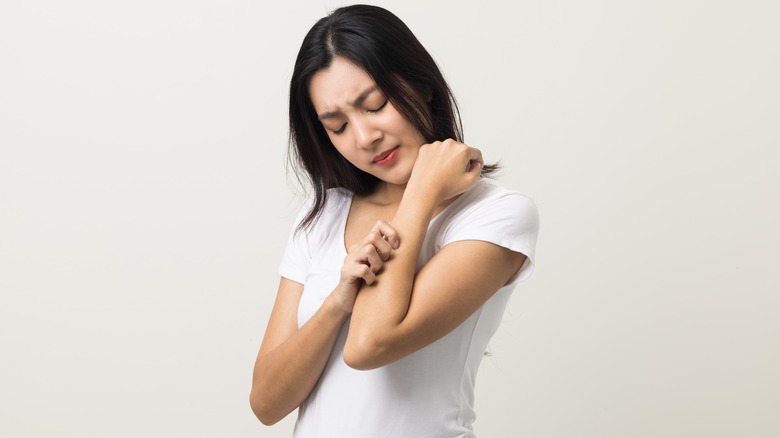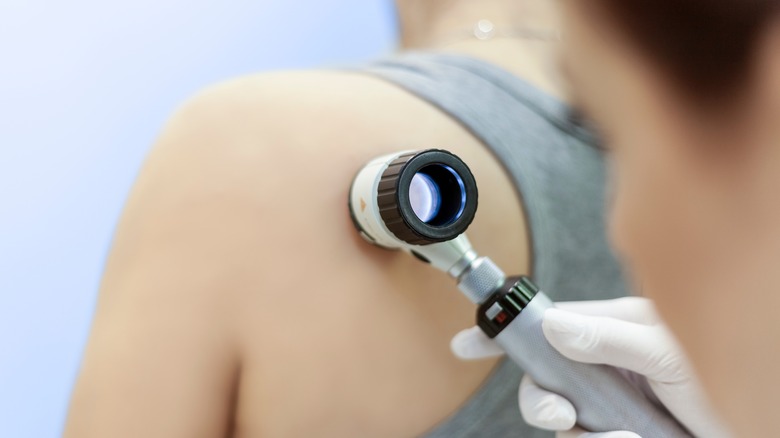How To Know If Your Ingrown Hair Is Infected
If you have an ingrown hair, this simply means that instead of growing outward from the follicle as normal, a hair has emerged from the follicle and then turned back into the skin, embedding itself there, explains the Mayo Clinic. This usually occurs with hairs that have been removed, either through shaving, tweezing, or other means, as the hair must be in the process of growing back to become ingrown. The result of a hair growing back into the skin is irritation that can present as swelling, bumps, burning, itching, and hyperpigmentation.
WebMD points out that in most cases, ingrown hairs won't require any attention on your part and will likely resolve themselves after some time. However, they can occasionally leave behind a scar or permanently alter the skin tone in that specific area. Other times, an ingrown hair can lead to an infection. Healthline adds that there are certain risk factors that can contribute to this complication, including having particularly curly or prickly hair. Due to the growth pattern of these hair types, they're more likely to get embedded in the skin and not heal on their own. Here's how you'll know if your ingrown hair has become infected.
An infected ingrown hair is a common complication
While most ingrown hairs will cause some alteration to the skin, such as red bumps, an infection will eventually cause intense swelling and redness and will likely feel hot if you place your finger on the area, explains Healthline. Although this isn't always the case, you may also notice that the bump starts to fill with pus and resemble a pimple.
If you notice an infected ingrown hair on your body, Healthline outlines a few home remedies that should take care of it. First, you can try cleaning the infected hair while attempting to coax the hair out from the skin with some gentle scrubbing. If this doesn't work, the Cleveland Clinic offers the solution to soak a washcloth in hot water and keep it pressed against the ingrown hair for around about ten minutes at a time to soften the skin and open the infected pore. This will ideally allow the hair to emerge and the area to heal. Tea tree oil, which contains antibacterial and antimicrobial properties (via Healthline), is another great home remedy to encourage the infection to heal while minimizing the chances of it worsening.
While home remedies often prove successful at resolving infected ingrown hairs, the Cleveland Clinic points out that if they don't go away on their own, you may need to contact your healthcare provider for further intervention. A doctor can prescribe an antibiotic or other medication to target the infection and/or drain the pustule themselves.


